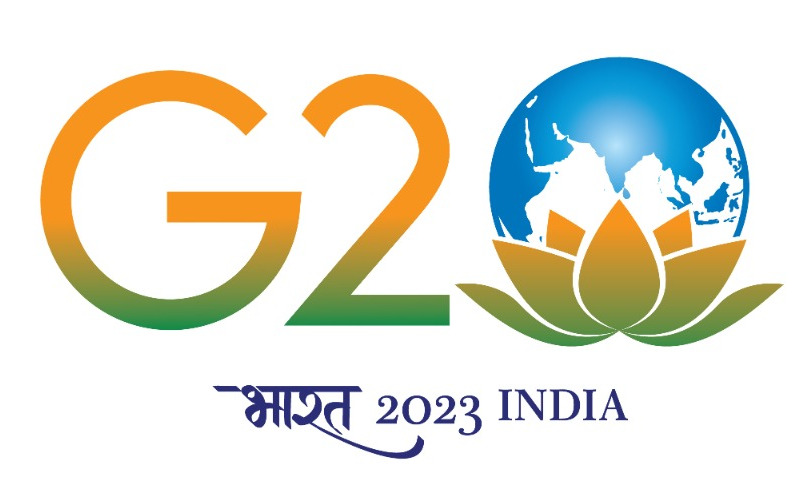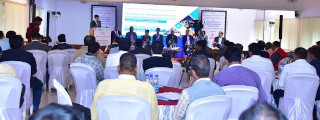Brief Overview of Aluminium Sector
The Indian Aluminium Industry is the second-largest producer of aluminium globally, with a share of ~5.3% of the global output. In FY21, India produced ~4 million tonnes (MT) of aluminium. The industry is highly concentrated with most of the country’s aluminium being produced by the top five companies. The aluminium industry in India is thriving at an enviable growth rate of 7% per annum, which is one of the highest in the world. Demand for aluminium has grown over the years from various sectors such as construction, electrical, automobile, packaging, etc. The export of primary Aluminium from India has witnessed a rapid rise over the years and the share of exports in aggregate production has risen to 54% in FY20 from 46% in FY16. India's primary Aluminium exports increased by approximately 50% during the first quarter of FY21.
In FY21, India's per capital aluminium consumption stood at 2.5 kg as against the worldwide average of 11 kg and 24 kg of China. According to a NITI (National Institution for Transforming India) Aayog study, enhancing India’s per capita aluminium consumption to the global average would require an annual increase of 16 MT in consumption. The major aluminium-consuming sectors include power (~44%), construction (17%), and consumer durables & transportation (10-12%).
Manufacturing Process & Energy Consumption
The Aluminium manufacturing process comprises of two primary sub-processes; bauxite refining for production of alumina and smelting for productions of aluminium metal and secondary process for conversion to merchant products.Although considerable energy is also used in anode production, this is often accounted for under raw materials. In the overall context, typical distribution of energy usage in different sub-processes is shown below:
| Sub- Processes | % of Total Energy Consumption |
|---|---|
| Alumina Refining | 12 |
| Anode Production | 9 |
| Smelting | 72 |
| Casting | 7 |
In the refining and anode making process primarily thermal energy is used, for digestion and calcination for the former and baking for the later. However, if the energy content of the coke is also considered, it adds 30% more to the overall energy consumption. Electricity is used for the smelting process. For the secondary process, both thermal and electrical energy are used, thermal energy for die casting, pre-heating and stress relieving whereas electrical energy for rolling and extrusion. Further, all the plants in India have their coal based captive power plants meeting practically the entire power demand of the manufacturing process. Typical fuel mix of Aluminium manufacturing process involves a) Coal (94%) b) Oil (4.5%) c) Gas (0.5%) d) Electricity (1%)
In addition to the basic technology, operation and maintenance also play very important role in maintaining the energy usage. Some of the critical areas of operational control include control of alumina feed rate, cell temperature, current densities, anode management, management of product extraction. Similarly, maintenance includes proper insulation levels and thermal balance, conductivity of various bus bar connections and joints etc.
Flow Process Diagram of one Typical Aluminium Plant
Birdeye of a Typical Smelter Potline of an Aluminium Plant
PAT Scheme for Aluminium Sector
The Aluminium sector is one of the designated sectors covered under the BEE’s Perform, Achieve and Trade scheme. The Aluminium sector has been categorized based on its process in to four subsectors: refinery, smelter, integrated and cold sheet mills.
The Aluminium industry, with an annual consumption of over 7,500 tonnes of oil equivalent (toe), is notified as a Designated Consumer (DC) under the PAT scheme. 1. PAT Cycles wise number of DCs, their total energy consumption (Million TOE) and energy savings targets (Million TOE) of the Aluminium Sector are presented below:
| Cycles | No. of DCs | Total Energy Consumption | Energy Saving Targets |
| PAT Cycle I | 31 | 2.09 | 0.29 |
| PAT Cycle II | 29 | 2.68 | 0.146 |
| PAT Cycle III | 1 | 0.057 | 0.003 |
| PAT Cycle IV | 2 | 0.164 | 0.0098 |
|
PAT Cycle V |
8 | 0.2837 | 0.0169 |
| PAT Cycle VI | 2 | 0.055 | 0.003 |
| PAT Cycle VII | 24 | 2.21 | 0.081 |
| PAT Cycle VIII | 1 | 0.1267 | 0.00744 |
Energy savings achieved by DCs of Aluminium sector under PAT Cycle I and PAT Cycle II are 0.73 MTOE and 0.573 MTTOE respectively.
Best Practices Adopted by Aluminium Sector
Aluminium industries have adopted the following key operational best practices and technologies as part of their Industrial Energy Efficiency and Decarbonisation (IEED) measures:
- 100% graphitized cathode installation.
- Improvement of conversion efficiency of rectifier systems.
- Graphitized pots current efficiency improvement and average voltage reduction.
- Silicate-based anode coating technique applied in reducing the top oxidation which has a major impact on Net Carbon Consumption.
- AC to DC conversion efficiency improvement.
- Use of RUC (Ready to use Cathode) copper inserted collector bar for pot cathode.
- Reducing the dead pot residual voltage to zero by a shorter current path having a higher cross-section and lower current density.
- Fitch fuel catalyst used in the Bake oven and cast house to save HFO consumption and to reduce emissions in the Bake Oven and cast house (around 5% of fuel saving).
- Biomass Co-firing in boilers.
- Energy Analytic Platform using Power BI with AI and energy saving using copper insert.
- Digital smelter solution (first in India), deployed at an aluminium smelter in Jharsuguda, Odisha - uses digital twin technology for human-less monitoring, and operational control thus enhancing energy & resource efficiency through a remote advisory system.
- OSIsoft PI (Process Information) System, an industrial IoT solution, implemented inJharsuguda uses machine learning to boost operational efficiency and productivity.
Details of Line Ministries
Details of Specialised Organization / Research Institute
Details of Industrial Associations
List of Key Technologies
- Drained cell technology with wet table cathodes
- Zero Gap Electrolyser
- Calciner main burner nozzle replacement.
- Use of Cold sealing paste for pot relining.
- Corro-coat coating of the pump to increase its efficiency.
- Solar heating system for hot mill emulsion.
- Hot water generator to replace the steam boiler in Tension Leveller process.
- Inert Anode Technology.
- Wetted Cathode Technology
- Multipolar Cell Technology.
- Renewable Energy based Smelter Plant
List of EE and Decarbonisation Technologies and Solutions (National& International)
Reports
Pathways for Energy Efficiency and Decarbonisation in the Indian Aluminium Industry



